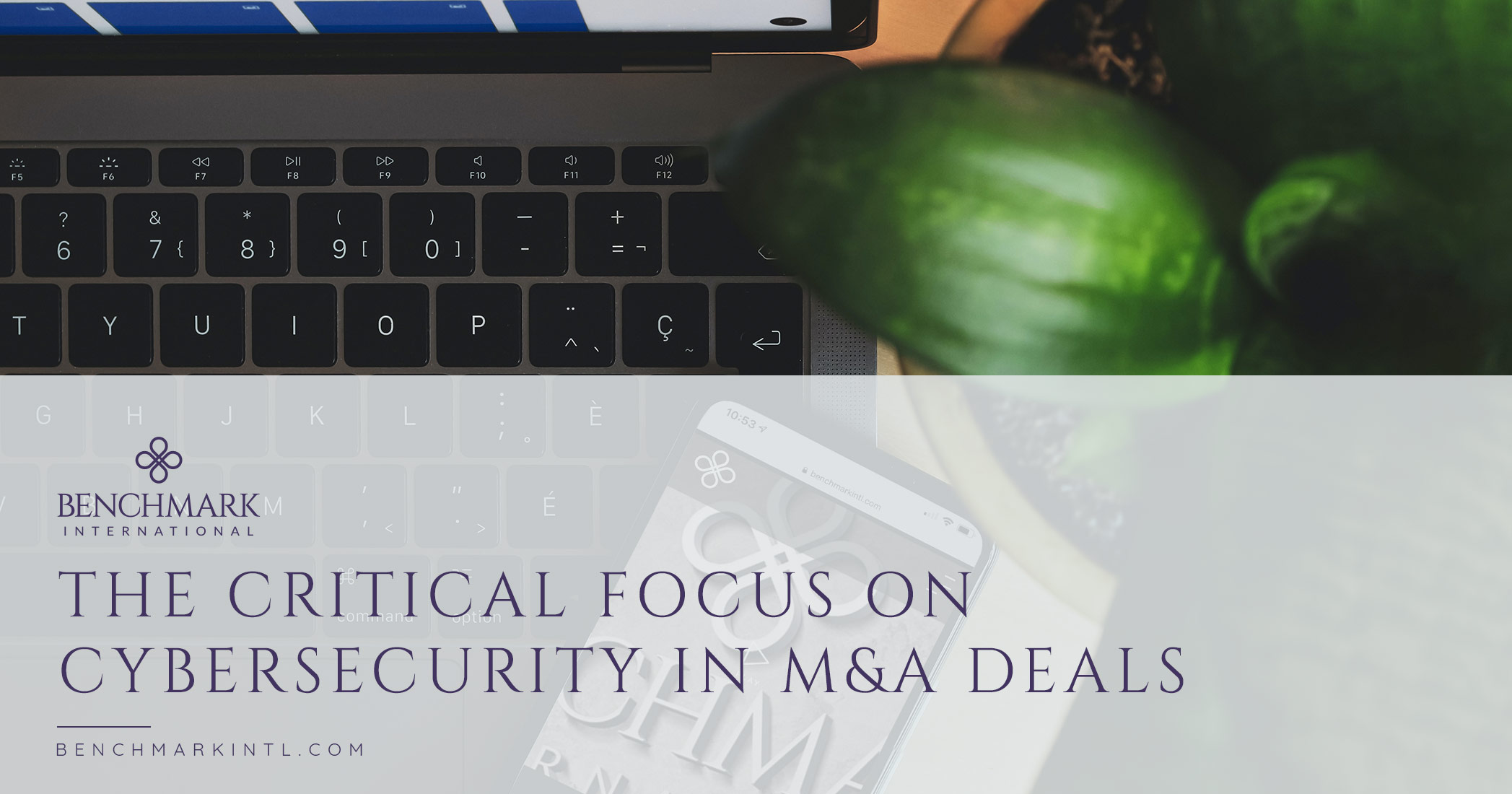Capital markets drive capital to areas of innovation and positive growth, creating jobs and fueling economies. In the US, capital markets fund 73% of all economic activity. This takes the form of equity and debt financing of non-financial companies. Capital markets facilitate debt issuance, which tends to be a less restrictive form of borrowing for businesses. The usage of debt capital is the most prevalent in the US (80%), versus other regions (only 20–30%) where bank lending is more prevalent.
READ MORE >>Archives
What is The Outlook For Capital Markets in 2022?
Seller Protection With an Earnout
Earnout Agreements have become increasingly routine in deal structures over the last several years as they are most widely used during times of political and/or economic uncertainty. The earnout payment is additional compensation paid in the future to the seller after the business is sold. An earnout agreement can help bridge a valuation gap or encourage the former owner to remain for a longer period of time following the close of the sale. They should only be considered when the company will continue to operate the same in the years following the sale at the time of closing. While sellers can sometimes be nervous when it comes to agreeing to an earnout, there are protections for yourself that you can keep in mind.
When structuring the earnout, it is important to consider the financial metrics used and choose your benchmark carefully. For example, buyers will often prefer to use an EBITDA target as they believe this will be the most dependable indicator of the business's profitability. On the other hand, typically, sellers do not like using EBITDA due to concerns that the buyer can manipulate the number to benefit the buyer at the end of the earnout period. While sellers usually prefer a marker based on the business's gross revenues, gross profit can sometimes be used as a good compromise for both parties. Suppose an EBITDA calculation must be agreed to move forward with the deal. In that case, the seller can ask for various expenses, overhead costs, etc., to be excluded from the calculation.
Share this:
Mortgage Brokerage Industry Report
The Global Market
The onset of the COVID-19 pandemic rattled the worldwide mortgage market. New lending volumes plummeted to record lows amid declining consumer sentiment, job losses, and nationwide lockdowns in many countries. However, new mortgage lending has remained on an upward trajectory since the second half of 2020. The total number of closed-end mortgage originations jumped from 8.3 million in 2019 to 13.6 million in 2020. That’s an increase of 65.2%. Regulators have kept interest rates at an all-time low. Even though interest rates could begin to tick up at some point, globally, the mortgage brokerage services market is expected to continue to see tremendous growth through the year 2027.
READ MORE >>Share this:
Why Should I Sell My Company?
As the owner of a business, you face a slew of tough decisions nearly every day. One question you may have asked yourself is whether you should sell your company. Several factors can influence your decision to sell, some of which you may not have even thought about. Here you will find a comprehensive list of possible reasons to help you decide if and when selling your business is right for you.
It's at a High Point
Over time, most businesses face different cycles of highs and lows, and potential buyers prefer to acquire companies that are thriving and have a positive future outlook. When your company is performing well, and profits are high, you can opt to sell to get the maximum value in a sale. You may not be ready to retire or move on, but if you sell at the right time, you can make the most money possible and pave the way for a more secure financial future. This can also help you avoid selling at a later date for less value, which would mean less money for your retirement.
If you are far from being ready to retire, there are ways to structure a deal to stay on with the company, working for the new owner and helping them grow the business. This can help you start the transition to your full exit. And in this case, if the business declines or an economic recession occurs, you do not face the risk of losing value because you got out at the right time.
READ MORE >>Share this:
How a Partial Sale of Your Business Can Benefit You
There are strategies available for business owners who are in need of additional capital to grow their business. The partial sale transaction has gained popularity over the last couple of years. When business owners find themselves with limited operating liquidity, they are unable to create the type of growth they desire. A partial sale can bring additional resources into the business that can set into motion long-term growth strategies, increase operational stability and recruit new hires. If you are looking to downsize your company, you can invest that money into different opportunities that may offer you a higher return on your investment.
A partial sale of your business gives you the opportunity to remain involved in the business that you have spent decades building. Following a partial sale, many business owners serve as advisors, senior executives, board members, etc., to assist the buyer with their transition period to new ownership. Smart buyers are open to customizing the role and involvement of the seller once the deal has closed in order that the seller remains with the business for months and years to come.
Share this:
Financial Services Industry Report
Financial Planning & Advisory Sector
In 2022, the market size of the financial planning & advisory industry is $59.2 billion. It is expected to increase 4% this year. Between 2017 and 2022, the market has grown 4.5% per year on average. The size of the market has increased faster in the U.S. than the overall economy.
Industry profit declined in 2020 due to declining assets under management and lower return on assets but increased in 2021 as the economy began to recover. As macroeconomic conditions continue to improve through 2026 gradually, industry operators are expected to benefit from rising equity values and rising interest rates.
High competition is a challenge in the industry, while the population's median age represents an opportunity. This is because the rising median age of the U.S. population is approaching retirement age, which increases the demand for retirement planning, capital preservation, and estate planning.
READ MORE >>Share this:
The Increasing Adoption Of Enterprise Resource Planning And Customer Relationship Management Software
Due to the COVID-19 pandemic, there has been increased adoption of enterprise resource planning (ERP), customer relationship management (CRM), and other entrepreneurial software. In 2020, many companies accelerated their plans to begin using these systems, and the market for them remains hot, particularly for Platform-as-a-Service (PaaS) and Software-as-a-Service (SaaS) models. COVID forced most businesses to digitize their offerings in real-time as consumers began turning to online shopping and employees started working remotely—both trends that are expected to continue into the future.
READ MORE >>Share this:
The Shift From a Seller's Market To a Buyer's Market When Interest Rates Rise
So if you are a business owner considering selling your company, the good news is that right now, it's a seller's M&A market. By October of 2021, total M&A deal activity reached $4.4 trillion, which is an increase of 92% compared to a year ago and is the strongest opening period for M&A since 1980. In addition, merger activity resulted in deals totaling $1.52 trillion in the three months prior to September 27, 2021. That's up 38% from the same quarter in 2020—and more than any other quarter on record.
In a seller's market, demand is high for assets that are in limited supply, giving sellers more pricing and negotiating power. This demand can be attributed to a recovering economy, high cash balances, big government spending, new SPAC buyers, and low-interest rates. Plus, investors are flush with cash and ready to spend it on acquisitions that can help create growth or add capabilities. When market conditions shift, buyers have the upper hand in deal negotiations. And this could happen when the U.S. Federal Reserve increases interest rates in the next year or so.
Share this:
What Does Inflation Mean For Your Ability to Sell Your Business?
Short answer – We don’t know. The M&A market has never interacted with this much inflation before. Inflation is now at a 40-year high. In 1982, there was no M&A market. The birth of the market is most often traced to KKR’s 1988 takeover of RJR Nabisco, as made famous in the 1989 book “Barbarians at the Gate” and the 1993 movie of the same name. Whether that is the actual date of birth or not can be argued. Still, at the time it was commonly thought that the cash for the $25 billion price tag was unattainable because, as the book says, there was a belief that there was not anywhere near that much excess cash floating around for doing deals in the entire world.
READ MORE >>Share this:
The Impact of Labor Shortages on M&A
The Labor Shortage Persists
The COVID-19 pandemic has impacted companies of all sizes, but small businesses have certainly been hit the hardest. First, there were total shutdowns, followed by financing problems due to slowed business, and now it is labor shortages that are the latest issue as the world works towards recovery.
The slew of workers leaving the workforce altogether is fueling a growing labor shortage in what seems to be every industry. Demand is up, and supply is down. Businesses are facing concerns with not having enough people to get the job done—especially in sectors such as healthcare and technology. These spaces are seeing attrition rates of 3.6% and 4.5% higher, respectively, than last year. Research even shows that 36% of workers who quit their jobs did so without another job lined up.
And the labor shortage is an issue that is happening on a global scale, from the US to Canada to Europe. According to the US Census Bureau, many businesses struggle to retain and attract employees, and 49% of business owners say the labor shortage is affecting their business. And a Canadian study reported that 30% of Canadian business owners say the top motivating factor for pursuing an acquisition is gaining access to new talent. That number is up from 20% before the pandemic. Additionally, a recent Eurostat survey found that, in the third quarter of 2021, a worker shortage was hampering production at 83% of industrial companies in Hungary, 50% in Poland, and 44% in the Czech Republic.
READ MORE >>Share this:
No Recession in 2022, But 2023 May Be a Different Story
The good news is that experts agree that 2022 will be in the clear from a recession for the US economy. But the next few years may tell a different story.
An economic downturn could arrive as early as 2023. Federal Reserve policy is expected to change, which will result in more business cycles that many companies will not be ready to face. Even if the country is lucky enough to dodge a recession in 2023, we can expect the economic decline to be more detrimental in 2024 or 2025. The Fed will eventually start easing up on stimulus initiatives and raising interest rates at the same time that inflation is on the rise. It usually takes the economy about a year to react to the Fed’s actions, putting us on track for a safe 2022, but with the following years feeling the impacts.
READ MORE >>Share this:
2022 Is a Seller's Year for M&A
2021 Was a Record Year
In 2021, dealmakers worldwide announced $5.6 trillion in M&A transactions (that’s 30% higher than the previous record), and the U.S. reported $2.9 trillion in transactions (that’s 40% higher than the previous record). While 2021 may have been a record-breaking year for middle-market M&A activity, 2022 should be an excellent year for sellers.
Last year several factors drove deal activity to new heights:
- Pent-up activity from the previous slow year because of the COVID-19 pandemic
- A wealth of capital seeking investment opportunities
- Potential tax changes this year
- Strong economic growth
- Continued low-interest rates
Share this:
2022 Oil & Gas Report
In dollar value alone, the oil & gas sector is the world’s largest industry, employing a massive workforce of around 4 million people globally. The major oil companies account for a significant percentage of a country’s national GDP. The world’s largest producers of oil are the U.S., Saudi Arabia, and Russia.
In 2021, the oil & gas sector recovered well, with oil prices climbing to their highest levels in six years. Total revenues for the oil & gas drilling sector in 2021 came to approximately $2.1 trillion. The global oil & gas market is forecast to reach $7425.02 billion in 2025. That’s a compound annual growth rate (CAGR) of 6%. This growth is primarily due to companies shifting their operations during recovery from the effects of the COVID-19 pandemic. Low-interest rates positively impacted the oil & gas industry in most developed countries.
The global oil & gas exploration and production sector account for a large chunk of the global economy. The growth of this sector is expected to increase in the future, with OPEC crude oil production averaging 34.15 million b/d in 2022.
READ MORE >>Share this:
2021 Was a Record Year For M&A - And 2022 Could be, Too
After the trials and tribulations of 2020, no one really knew what to expect going into 2021. Yet, for the world of M&A, it couldn’t have been a more pleasant surprise.
Last year has most certainly been a record year for M&A deals, making a huge comeback from 2020. In 2021, the number of announced deals exceeded 62,000 globally. That’s up an unprecedented 24% from 2020. Deal values reached an all-time high of $5.1 trillion.
Almost all sectors are showing signs of recovery from 2020. Values are up and multiples are rising, with strategic M&A multiples at an all-time high (a median multiple of 16x EV/EBITDA).
READ MORE >>Share this:
Proposed Changes to U.S. Section 1202 Tax Reform: What You Need to Know
WHAT IS SECTION 1202?
In the United States, Section 1202 is known as the Small Business Stock Gains Exclusion. It is a section of the IRS code that allows capital gains from Qualified Small Business (QSB) stock to be exempt from federal taxes when selling. But not all small business stocks qualify:
Share this:
Benchmark International Awarded M&A Deal of The Year (100M - 250M)
At the 20th Annual M&A Advisor Awards, Benchmark International was awarded M&A Deal of the Year (100M-250M) for the acquisition of PBK Architects by DC Capital Partners.
As the 23rd largest US-based architecture firm, PBK, based in Houston, Texas, and its subsidiaries in California, Beijing, Shenzhen, and Hong Kong, employ more than 500 architects, engineers, and related professionals.
In addition to its Top 25 status, in 2019, PBK was ranked as the “#1 Education Design Firm” by Engineering News-Record (“ENR”), widely regarded as the engineering and design industry’s premier publication. Specializing in K-12 projects and, in particular, large public high schools, PBK has long been the go-to firm for sustainable design and next-gen integrations in particular. The company also focuses on two related building types—higher education and sports facilities.
This transaction followed closely on the heels of 11 other deals that Benchmark International closed in the architecture, engineering & construction (AEC) space in the first half of 2020.
Share this:
Benchmark International Named Investment Banking Firm of The Year
At the 20th Annual M&A Advisor Awards—known as the Oscars of the M&A world— Benchmark International was awarded Investment Banking Firm of the Year. The awards are presented by The M&A Advisor, and the winners were announced at the Gala Ceremony live event held in New York City on November 17, 2021.
Benchmark International beat out the other nominees, which included Capstone Partners, Clearsight Advisors, DC Advisory, Drake Star Partners, Generational Group, Leonis Partners, and Raymond James.
These awards serve as the industry benchmark for dealmaking excellence, recognizing the leading M&A transactions, restructurings, deal financings, products/services, firms, and professionals.
Share this:
A Full or Partial Business Transition: Which is Right For You?
Every company has its own unique circumstances and needs. As a business owner, you can choose from a number of different ways to transition out of your company in a sale or before retirement. When succession planning, you should consider your goals for both the company and your life after the transition, such as financial requirements and how much you want to remain involved in the business. Adequate succession planning ahead of time can also help to create significant value for your company.
A transition of a business can be internal or external. Under an internal transition, the company is usually passed on to the next generation of family or a management team member. In an external transition, a strategic or financial buyer purchases the company, either completely or partially. There is also the option of an employee stock ownership plan (ESOP), which falls somewhere in between an internal and external transition.
Full Business Transition
A complete transition occurs when 100% of company ownership is sold to an investor, such as a strategic buyer or private equity firm. Under a full sale, there is a complete change in ownership control, either as a stock deal or asset purchase. Complete transitions are most often asset purchases because it assuages certain liabilities from the buyer. The owner could be required to stay involved with the business through a transition period that can range from months to years, especially if they are a key part of management.
Business valuations in a full transition are based on competitive negotiations. In many sectors, a multiple of the company’s EBITDA (earnings before interest, taxes, depreciation and amortization) and factors such as size, profitability, industry, customer base, and location. In a complete sale, the seller is often given the majority of transaction proceeds upfront, with the rest paid later through an earn-out or seller note.
Share this:
U.S. Private Equity in Middle Market Continues at Record Levels
Middle-market private equity (PE) dealmaking in the United States didn’t lose its record momentum in the second quarter of 2021, some of which carried over into Q3, thanks to sustained economic recovery, ample debt, and plenty of available capital, according to data from Pitchbook. U.S. GDP grew at an annualized 6.5% in Q2 but slowed to 2% in Q3, mainly due to global supply chain issues.
PE fundraising is also holding strong, with the 87 U.S. middle-market funds raised so far this year on course to set a new record. Additionally, the $68.4 billion in capital raised in 2021 is on track to be the second-highest annual total since 2010.
Most deal activities were put on hold for several months after March of 2020 and the onset of the COVID-19 pandemic, but 2021 and early 2022 may be the right time to sell. The following factors are affecting the viewpoint of sellers of privately-owned companies:
- Some owners are now more heedful of another crisis and how it could affect their businesses.
- Many owners no longer wish to sustain efforts and risks that come with their businesses.
- Owners who worked remotely during the pandemic got accustomed to more flexible schedules and free time.
- Numerous owners nearing retirement are worried about the possibility of higher corporate, personal income, capital gains, and dividend taxes.
- Because wealth built up in private companies is not easily converted to cash, some owners have focused on the fact that after-tax proceeds from a sale will last for a long period of time.
So far this year, the largest share of PE deals has taken place in the lower to middle markets, with deals of less than $1 billion making up nearly 70% of all deals. 2021 remains on pace to easily surpass the prior annual record from 2019. At the end of the year, numbers are expected to be even more impressive as investors may hurry to close deals before the year comes to a close.
According to the Golub Middle Market Index, U.S. middle-market companies registered 21% revenue growth in the third quarter of this year. In addition, direct lending funds account for most middle-market LBO financing and reached record fundraising levels in the second quarter.
Add-ons increased as a share of PE deals. Middle-market firms looked to add mid-sized aggregators and sought out M&A deals to expand platforms, diversify the value chain, and embrace ESG principles.
There was also robust exit activity in the middle market, as valuations were desirable and investor confidence was high. So far this year, the market hosted an estimated 430 exits with a combined value of $87.3 billion. Soaring valuations mean that many GPs meet their investment goals earlier than expected, driving many to cash in on investments ahead of schedule.
Smaller, strategic exits are dwindling in the hospitality and travel sectors for expected reasons after the pandemic impacts. Middle-market sponsors are holding onto investments in these pandemic-stricken sectors. In the second quarter of 2021, there were almost zero exits of hotels, in-person dining, travel providers, or other related companies.
Secondary buyouts are also following an upward trend. So far this year, SBOs account for nearly 62% of all middle-market exits. Buyout firms are taking advantage of limited partners’ healthy appetite for private market exposure as well as the record deal activity that enabled firms to fundraise at a very fast pace. While first-time funds and emerging managers put up positive numbers in 2021, some bigger LPs put less investment into large multi-strategy firms or shifted it to new products offered by those with whom they already had a relationship.
Even amid all this positive activity, middle-market firms in the U.S. are still facing other challenges. While unemployment rates have improved from 2020, there is still a record number of unfilled jobs, causing major labor shortages in sectors such as manufacturing, healthcare, and hospitality. These circumstances are causing firms to focus more on deals that acquire key talent and automated technologies that help with employee management and retention. The sector of senior care has been hit particularly hard by labor shortages, which is likely to result in increased consolidation by home care platforms. Additionally, insurance brokerages, wealth management firms, and registered investment advisors (RIAs) all witnessed record M&A activity in the first half of this year.
PE firms are also pursuing more intricate opportunities to expand lines of business, end-market exposures, and product value chains. Such game-changing add-on acquisitions can be especially effective for vertical software deals because complementary products can be woven into multi-capability platforms to create all-in-one solutions that are good for customer retention.
Deal activity is also being driven by environmental, sustainability, and governance (ESG) initiatives. ESG has moved into the forefront for businesses this year. Transactions in the renewables market represent middle-market opportunities to grow a platform into a sector leader because of the market’s highly fragmented nature. Firms in the middle market are also pursuing add-on acquisitions to better align their portfolio companies with sustainability initiatives, whether to meet changing consumer sentiment or lower capital costs by lowering carbon emissions.
READ MORE >>Share this:
Benchmark International Named Among The 50 Best Workplaces Of The Year
Benchmark International has been named as one of the 50 Best Workplaces of the Year 2021 by The Silicon Review. The list is handpicked from different areas and recognizes businesses that attract both talent and clientele and stand out with regards to unique and positive company culture.
READ MORE >>Share this:
The Benefits of an Effective Seller Transition Period
A very important part of selling your business occurs after the business has been sold. The transition period, also known as the handover period, begins when the exiting owner remains with business for a period of time to assist the new owner with taking control of the company. The transition period should be carefully planned and thought through in order to ensure that it is well executed when the time comes. It can make a great deal of sense to begin working on these details early on in the sale process.
READ MORE >>Share this:
Benchmark International Wins Several M&A Advisor Awards: Investment Banking Firm Of The Year, M&A Deal Of The Year ($100M-$250M), Professional Services (B2B) Deal Of The Year
Benchmark International won three prestigious awards at the 20th Annual M&A Advisor Awards, presented by The M&A Advisor. The winners were announced at the Gala Ceremony live event held in New York City on November 17, 2021. The awards won by Benchmark International included:
Investment Banking Firm of the Year
M&A Deal of the Year ($100MM to $250MM)
Professional Services (B2B) Deal of the Year
These awards are known as the Oscars of the M&A world, serving as the industry benchmark for dealmaking excellence, recognizing the leading M&A transactions, restructurings, deal financings, products/services, firms, and professionals. Benchmark International took top billing over other well-known firms such as Raymond James, Goldman Sachs, and KPMG.
Gregory Jackson, CEO of Benchmark International, stated, "We are immensely proud of our team for such honorable achievements. We will continue to pursue only the highest of standards for our clients and to maintain our role as a leader in the world of mergers and acquisitions."
"These awards speak volumes about how much Benchmark International has become game-changers in the middle market. Congratulations to every member of the Benchmark International family who works tirelessly to make sure we shine every day," said Steven Keane, Chairman.
Also weighing in is Dara Shareef, Managing Partner, who said, "This fantastic news is a true testament to the vision, talent, and commitment of everyone at Benchmark International who always goes above and beyond to look out for the best interests of our clients."
Clinton Johnston, Managing Director, also expressed his pride in a statement: "We are delighted with this recognition that demonstrates how highly regarded we are in the M&A space. Our team's hard work and impressive accomplishments deserve to be celebrated."
The M&A Advisor was founded in 1998 with a focus on mergers and acquisitions, and today is the leading organization that recognizes excellence and achievement among the world's leading dealmakers.
Share this:
Reps and Warranties Insurance is Now Key for Strategic Buyers
Reps and warranties insurance is a policy secured for corporate transactions such as mergers and acquisitions. In recent years, the amount of this type of insurance sold has increased significantly. It covers the indemnification for certain breaches of the representations and warranties in transaction agreements, either partially or in full. Reps and warranties insurance usually doesn’t cover losses for breaches of covenants (other than pre-closing tax indemnification) or purchase price adjustments.
READ MORE >>Share this:
The Impact of U.S. Infrastructure Investment on M&A
The U.S. Senate recently passed the $1.2 trillion bipartisan infrastructure bill, titled the Infrastructure Investment and Jobs Act (IIJA), to improve the country’s roads, bridges, and utilities. The bill does face an uncertain future in the House of Representatives, where its support is more limited. Still, the Democratic Party could use the reconciliation process to get the bill passed into law.
The bill includes:
- $73 billion for electric grid and power infrastructure
- $66 billion for passenger and freight rail
- $65 billion for broadband investments
- $55 billion for water systems and infrastructure
- $50 billion for Western water storage
- $39 billion for public transit
- $25 billion for airports
- $21 billion for environmental remediation projects
- $17 billion for ports and waterways
- $15 billion for electric vehicles
- $11 billion for road safety
So, what might this all mean for M&A?
READ MORE >>Share this:
The Latest Sales Trends Heading Into 2022
Every business owner should be keeping up with the top sales trends being used to boost companies’ bottom lines in today’s tech-driven economy. So what does the future hold? Use these sales trends insights to make sure you’re doing every last thing you can to take your business to the next level.
Social Selling
Over the last decade, selling has evolved immensely. More than 90% of consumers do online research before buying something these days. And that’s why social selling is becoming so integral to the sales process. Social media connects you with consumers already interested in what you do, so you already have the upper hand by simply having them as an audience. You are also able to build better relationships with them, which will translate to higher customer retention rates.
And don’t forget about the power of referrals. 70% of companies have reported that referrals convert faster than any other type of lead. If your consumers are happy with what you are doing, they will be more likely to recommend you to their friends and family—something that social media makes it easy to do in just a click or two.
Social selling also comes with a few other added benefits. It increases your brand visibility by actively engaging with people online, and it also keeps your brand top of mind. This means you get higher-quality leads. And with high-quality leads, you can expect to see higher sales numbers.
Value-Based Selling
Customers are savvier than ever. They can see through gimmicks. Simply shoving deals in their faces doesn’t work so well anymore, especially in the B2B sector. This is where value-based selling comes in.
Data shows that 87% of high-growth companies use the value-based approach, and with good reason. By focusing more effort on showing customers the direct benefits or personal value they can enjoy from using their products or services, you’re more likely to close more deals.
Artificial Intelligence (AI)
AI adoption for sales teams is projected to be at 139% for the next three years. This is because business leaders are realizing how it can make a massive impact on sales numbers by helping with processes and tasks. Did you know that AI is capable of performing 40% of sales tasks?
AI can help you gather valuable data on customers that you can use to craft marketing strategies to increase your sales. It can also provide value by offering suggestions to customers based on their recent transactions. But that’s not all. AI can also predict trends in your sector to help you stay ahead of the game, boost productivity by automating menial tasks, identify leads with a higher chance of conversion, and improve customer satisfaction.

Personalized Customer Experience
When you give your customers a more personalized experience, they are more likely to do business with you. Research shows that nearly half of all buyers will make an impulse purchase after getting a personalized shopping experience. Because most customers appreciate a level of personalization, they are willing to give you their personal information or create online profiles. And this is really half the battle when it comes to building a solid customer base. Additionally, when customers feel more engaged on your website or app, they are more likely to do business with you. As long as you can offer them convenience, speed, helpfulness, and friendly service, getting personal can take you a long way.
Outsource Sales
80% of logistics leaders have reported that the matter of outsourcing is no longer a yes or no question—it’s just a question of how much needs to be outsourced. The global outsourcing market is projected to grow to $82.2 billion by 2022.
By outsourcing, you will have a dedicated sales team that is laser-focused on identifying leads, reaches different segments through different platforms, and converts potential customers. Meanwhile, your company saves money and gets the sales expertise needed for the job while you focus more on your business. Outsourcing can also help small businesses with scalability issues. If your company experiences rapid growth, an outsourced sales team is ready to handle it.
Customer Relationship Marketing (CRM)
91% of companies in North America have a functional CRM solution integrated into their system. And guess what else? 65% of sales reps using mobile CRM have a higher chance of meeting their quotas. CRM makes it easy for reps to see all the data they need in a centralized system. Because it also stores customer data, CRM can suggest products depending on their past purchases. It can also improve your relationships with your customers by giving you a complete understanding of their needs and preferences.
Omnichannel Sales
Selling today is all about unifying your sales channels and creating a single commerce experience. This gives customers the freedom to choose how they want to buy your product while expecting the same level of service no matter which they choose. 73% of shoppers look at different channels when searching for a product, such as websites, social media, and physical stores. By being visible across channels, your company has a better chance of being chosen by a customer. Omnichannel sales also make the buying experience more convenient. In fact, businesses using omnichannel sales retain 89% of their customers. Yet, 55% of companies do not have an omnichannel strategy in place. It’s simple. Get ahead of the competition by nailing down your omnichannel sales structure.
Target Millennials
Millennials live through technology. In the U.S. alone, 82.2 million Millennials use the Internet, spending about $600 billion every year. They are the most likely customer segment to try new technological features that you offer. And 68% of Millennials prefer a more integrated shopping experience. This is why having that omnichannel sales strategy is so important. Offer them a seamless shopping experience that focuses on technology.
Don’t Forget Generation Z
Generation Z now makes up 32% of the global population, and they have a collective $45 billion in spending power. They represent a huge chunk of the consumer population, and they are spending more and more. Gen Z-ers are digitally entrenched, with an affinity for content from sites like YouTube and Instagram. You should use these preferences to your advantage. And the best part of securing their brand loyalty is that they are poised to be customers for the coming decades because they have just recently come of age. That’s a massive sales opportunity you don’t want to overlook.
Share this:
The Myth Behind Multiples: How Buyers Really Value a Business
A topic common to the mergers and acquisitions market is the measure known as the business valuation multiple. This method determines a company’s value by its potential to earn in the future. It calculates a business’s highest value by assigning a multiplier figure to its current revenue. Multipliers differ based on the industry, economic climate, and other factors. There are a few ways in which multiples can be applied. Common multiple methods include:
READ MORE >>Share this:
Don't Miss Benchmark International's Newest Volume of The Mark
Our Benchmark International team is proud to have released our latest exclusive publication of The Mark, Vol. XX.
This new version titled “RANKED #1,” features a slew of helpful information to enlighten you as a business owner, answer important questions you might have, and apprise you of the latest and greatest updates in M&A and the busy Benchmark world.
In this volume, some of the insightful topics you will find covered include:
- The Current State of Commercial Real Estate
- Can It Be “Too Early” to Put My Business on the Market?
- Be Wary of EBITDAC
- Why Lower Middle Market Companies are Attractive to Buyers
- Should I Sell to an SBIC?
- The Myth Behind Multiples
- Understanding Financial Due Diligence to Prepare for a Successful Close
- What is an Employee Ownership Trust?
- The Critical Focus of Cybersecurity in M&A Deals
And there’s a reason the volume is titled, “RANKED #1.” It highlights our prestigious recognition by Pitchbook as 2020’s #1 Sell-Side Exclusive, Privately-Owned M&A Advisors in the world, as well as the remarkable award-winning accomplishments of our team leadership.
This is just some of the unique content you can enjoy in this new edition. You will also find reports updating you on Benchmark’s European expansion and new headquarters, our latest featured opportunities, and some of our completed transactions.
We hope you will find it helpful and continue coming back for more.
READ MORE >>Share this:
High Net Worth Retirement Planning Tips
You’ve proven you are an expert at running a successful business, and you know how to make money. But are you an expert when it comes to retirement? There are certain financial factors that high-net-worth individuals should consider leading up to retirement.
READ MORE >>Share this:
What Is Decentralized Finance?
Decentralized finance, also known as DeFi, makes financial products available to anyone on a decentralized blockchain network. Through this relatively new software system, all parties can interact directly through applications, eliminating a need for middlemen such as banks or institutions to facilitate transactions. It also eliminates a need for proof of identification or age requirements that banks typically require. There is no need for anyone to know anyone else’s identity. Everything occurs over a public blockchain, using smart contracts, which are bits of code that execute specified actions once certain criteria have been met. It’s based on mutual trust and strict privacy.
READ MORE >>Share this:
First Time Acquirer: How to Get a Loan to Acquire a Business
Now that you have found the perfect business for you to acquire, the question is, how do you finance the transaction? Most buyers will use a mix of debt and equity, but if you are a first-time acquirer, you may need help on where to go for the debt piece of the equation.
If you have never acquired another business before, the process of securing a loan for the acquisition might be challenging. Here are some things to consider when looking at your debt options.
Upon your initial conversation with a banker, be prepared to discuss your intent regarding the acquisition and your plans for the business’s future. You should also be ready to discuss your background and its relation to the company you are buying. In addition, you will want to understand the bank’s commercial loan options and which might be best for your goals. For example, you might need a traditional commercial loan or an SBA loan, depending on the acquisition size and details. While there are alternative financing options available, they could be much more costly.
Most financial institutions will underwrite the business and the borrower. If you own a similar business, they might underwrite both businesses as if they are one. Be prepared with documentation regarding your credit history, tax returns for all related entities (potentially including your personal tax returns), collateral options, and industry experience. The financial institution might request a balance sheet, profit and loss statement, projections, etc., for the business you are considering purchasing.
Lenders will provide you with their initial terms. Be sure to compare interest rates, fees, and other terms closely. Some terms you may want to consider are prepayment penalties and covenants that might affect the business. If there is real estate involved in the purchase, you will want to ask questions about the bank’s need for appraisals and various phases for the property.
After considering your options, you will then need to apply for the loan. Each financial institution will have its specific application and underwriting process. Depending on the loan size and the bank, the loan request may need to go to a special loan committee that meets periodically. This could add time to the approval process. You might want to discuss debt options with a bank with which you have a current relationship, as they will know you best given your existing history. If you have already received a loan from the bank, it could make the transaction process easier, which will make for a much better experience for you and the seller of the business you are looking to acquire.
Author
Kendall Stafford
Managing Partner
Benchmark International
T: +1 (512) 347 2000
E: Stafford@benchmarkintl.com
READ MORE >>
Share this:
15 of The Most Luxurious Hotels in The World
Now that the COVID-19 pandemic is settling into our rearview mirrors, so many of us have been itching to get out there to enjoy an indulgent vacation and a much-deserved change of scenery. So, here you will find a list of some of the most luxurious hotels in the world (in no particular order) to help you start planning your next beautiful adventure or a quiet escape from it all.
READ MORE >>Share this:
Why Companies Need Mergers and Acquisitions
There are many reasons that mergers and acquisitions are critical tools for companies of all sizes, some of which may not even be fully realized by business owners. Ultimately, it’s all about achieving positive results for the business by making strategic moves that make sense, all depending upon what the fundamental goal (or goals) may be. For companies in the lower to middle market, M&A can be an extremely effective solution for a variety of purposes.
READ MORE >>Share this:
The Critical Focus On Cybersecurity In M&A Deals
The recent cyberattack on the Colonial Pipeline in the U.S. is a glaring reminder of the vulnerabilities that all industries face, as well as the costly repercussions that can be a result of such a situation. Colonial Pipeline Co. paid the hacker group $5 million to have the company released from the ransomware to restore service to the critical pipeline. This actually turned out to be a wasted $5 million. For that high price, the hackers provided the company with a decrypting tool to restore its disabled computer network. But this tool was too slow, and Colonial ended up using its own backups to restore the system.
READ MORE >>Share this:
The Current State Of Commercial Real Estate
The COVID-19 pandemic has had a negative impact on all classes of commercial real estate. Yet, it also created some new opportunities within the commercial real estate (CRE) market, such as affordable rental prices, improved digital communication and payment facilitation, as well as new opportunities for business owners and investors. And further recovery is well underway.
CRE prices fell 11% between March and May of 2020. Since July, prices increased 7%, erasing over half of those pandemic declines. With investors sitting on wealth, more investment in stocks and bonds took place, which pushed prices up and interest rates down. With inflation being a growing concern, more investors may look to commercial properties with leases that have built-in rent increases to keep pace with inflation.
READ MORE >>Share this:
What is Private Equity and How Active is it in the Current Market?
While you may be hearing that the M&A market is currently active, numbers speak volumes. A recent article from U.S. News cited that private equity (PE) has inked more than 2,300 deals for the first five months of 2021. Year-over-year, this is just over a 21% increase in deal volume. In fact, according to Pitchbook data, in the first half of 2021, PE firms closed on 3,708 deals worth a combined $456.6 billion. That’s almost two-thirds of the $711.6 billion deal value recorded in the entire year of 2020, and the two years prior. It is estimated that there is roughly $3 trillion of dry powder—also known as available funds—on hand for investment, with even a large amount of assets under management.
Historically low-interest rates and record levels of fundraising have left private equity with dry power that they must put to use. The combination of these factors has created competitive bid scenarios for many sellers. It appears that many private equity firms believe that this trend will continue for the coming months. According to S&P Global Market Intelligence, roughly 7% of private equity firms believe that the investment landscape will deteriorate in the coming months.
You may be asking yourself, “What is private equity?” Private equity firms obtain capital to invest in private companies. They have a set period of time to make the investments with the goal of optimizing return for their investors. Their investors tend to be institutional investors such as insurance companies, pension funds, endowments, etc.
The firms typically invest in mature companies with predictable, steady cash flow and a need for operational changes or growth capital. Private equity firms will utilize their capital, connections, and expertise to help improve the managerial, financial, and operational aspects of the business. Their goal is to increase the profitability of the company as this will help drive the value of the company upon exit. The firms make investments with a ‘buy and build’ mentality.
Private equity firms realize their returns when they sell the investment. The firms tend to have a goal of roughly 20-30% return on their equity. Private equity firms will use leverage to help maximize their return. They also charge a management fee, typically a percentage of total assets under management, also known as AUM.
READ MORE >>Share this:
EXTRACTING BALANCE SHEET CASH AT DEAL CLOSING
Most deal valuations are set out as a multiple of earnings, plus surplus assets. Nick Hulme’s article, Valuing Companies, is a great read for more detail on this.
As he mentions in the article, surplus assets come in many forms, and can include lump sums of cash sitting on the balance sheet, the company’s premises/real estate (if the sellers are going to keep these personally post-close) and even the yacht or Bentley in some cases.
Below are some simple rules for sellers to keep in mind when considering Free Cash, the most common surplus asset we encounter on our deals.
Rule #1 – Have Realistic Expectations
A buyer will only allow you to extract cash at completion that is truly surplus to the requirements of the business going forward.
Think, perhaps, in terms of how much cash you could extract yourself without affecting the ongoing operations of the business, and how much you’d ordinarily want to leave in the business to guard against mid-month and month-to-month fluctuations in cash requirements.
In some cases, this cash can be extracted in a tax efficient manner (for example, in the UK where Capital Gains Tax is presently significantly lower than Income Tax, subject to certain conditions being met).
READ MORE >>Share this:
Who Are Financial Buyers and What Opportunities Do They Present?
Financial buyers are the companies we work with that are typically labeled as private equity (PE), a family office, a hedge fund, etc. In the traditional sense, a financial buyer is primarily concerned with the cash flow generated by a company or asset that they acquire. They think about investment opportunities (clients to us) through the rate of return they can obtain from years of bottom-line enhancement and an eventual resale of the asset at a premium, or much higher valuation, than when they bought it. Like trading stocks, but with more hands-on involvement, they wish to “buy low and sell high.”
There’s a strong chance, however, that many of the buyers you’re likely to see now as a seller in the lower-middle market fit the mold of what I call the “new-look” financial buyer. Your traditional private equity funds, for example, now tout an investment strategy with no timeline for an exit on their portfolio companies. This approach emphasizes the “culture” their respective firms bring to the table for the seller, and in a highly competitive buyer market vying for deal flow, this might make all the difference.
The new-look financial buyer focuses on employee retention, low-cost growth initiatives, management equity rollover, and various other incentives to promote an environment free from the traditional return-over-everything stigma. Go to the “About” or “Approach” section of many of these firms, and I am willing to bet you’ll see words like “collaborate,” “legacy,” “partner”—perhaps even with a chart comparing their firm side-by-side with the traditional PE model to demonstrate explicitly how they’re different. This is especially prevalent in the lower-middle market where our clients are often owner-operated, founder-led businesses cultivated across generations and spanning multiple decades.
A financial buyer must now separate itself from the competition, which is good news for our clients. As mentioned above, time horizons for financial buyers have increased in length as many PE firms now reorient as long-term investors. Many will make it a point to let our clients know they don’t intend to dramatically cut costs (including through personnel changes) as this would directly conflict with the evolving model.
At the same time, financial buyers (i.e., private equity groups and other institutional investors) can be lucrative partners for our clients through a variety of value-adding benefits that they bring to the partnership. These buyers, for example, often bring economies of scale through established and profitable portfolio (“platform”) companies and are therefore able to jumpstart revenue via access to untapped markets or unrealized customers bases. Furthermore, these platforms absorb back-office duties that might have previously slowed down the productivity of key employees, and even owners. Also, while exit strategies have become more relaxed from a timing perspective, financial buyers will not hold the asset indefinitely, and for sellers who maintain equity in the merged company post-acquisition, this means the opportunity to take a “second bite of the apple” upon exit.
When dealing with a financial buyer, be sure to ask some important questions:
- Are you a committed capital fund? It’s important that they have financing available instead of “shopping” the deal after locking a client into a letter of intent.
- Have you closed a deal before? Have you closed a deal in this space before? Note: a website with no portfolio page of active or inactive past deals can be a red flag.
- What does your capital stack typically look like (i.e., how much leverage will they use or how much debt will be placed on the balance sheet on the company)?
- How long has your fund been around?
- Do you have operating partners in the space?
- Why are you interested in our client?
- How do you plan to integrate our client into your firm or existing platform company?
- Culture is important to our clients. Can you speak to culture?
- How do you typically structure your deals?
- What is your timeline for a completed transaction?
- Am I able to speak with owners of previous companies for deals you’ve completed?
- My employees mean everything to me. What do you plan to do with them?
This is by no means an exhaustive list. Seller questions to the buyer will, of course, become more specific as the deal progresses. However, the basic questions above are a good starting point and represent the beginning of a potentially meaningful and lucrative journey for sellers considering PE for the next phase of their company’s growth.
READ MORE >>Share this:
Understanding Working Capital in the M&A Process
What is Working Capital?
In the process of selling your business, it is important to understand working capital as you accept an LOI (Letter of Intent) and move into the due diligence stage. Buyers require the business that they are purchasing to leave a predetermined amount of working capital to continue running the business and cover the short-term obligations.
In simple terms, working capital is calculated by subtracting your company's current assets (excluding cash) from your current liabilities (excluding debt). However, the calculation can become more complex in practice. Typically, in the LOI, the buyer will outline how the working capital “peg” will be calculated. The “peg” is a benchmark amount of working capital that is agreed upon toward the end of due diligence by the buyer and seller. The buyer typically considers current assets to include items such as accounts receivable, inventory, and prepaid expenses as necessary to maintain the ongoing operations. Items such as lines of credit, short-term debt, and taxes are not included in this calculation.
How Does Working Capital Influence the M&A Process?
When buyers are reviewing your company for potential acquisition, they want to ensure liquidity once they take over. The minimum level of working capital is considered to be part of the valuation and accounted for in the price included in the LOI. It is important to note that most M&A transactions are set on a cash-free and debt-free basis, meaning the seller maintains cash in the business but is responsible for paying off bank debts.
The working capital analysis is typically part of the buyer’s diligence process, which will involve the analysis of balances at the account level. Some items under the accrued expense or accounts payable may not be operational in nature and therefore are excluded from the calculation. However, the buyer may determine that an item was improperly omitted from the balance sheet and they may adjust the balances. The primary reason for this analysis is to accurately determine what a true normalized level of working capital should be given the company's historical financials.
How Are Working Capital Targets Determined?
In most cases, the buyer will use a historical average, which is typically 12 months to calculate the appropriate target at closing. The reason is that the buyer will be basing their valuation on the revenue, EBITDA, and working capital needed to generate this income will need to be provided. As a seller, it is important to remember that your EBITDA will typically reflect account receivables as revenue and account payables as an expense. The 12-month period for working capital is used to average out potential fluctuations as this correlates to valuations, which are typically based on a multiple of the trailing 12-month EBITDA. Seasonality should also be considered in the calculation. For example, working capital could be much higher or lower depending on if the deal were completed during the peak season. In this case, the buyer would be required to pay more as the working capital would likely be much higher or lower than average. On the other hand, if the transaction were completed during the off-season, working capital would be reduced.
Adjustments During Diligence
As the seller, prior to the closing, you will deliver an estimate of working capital that you believe the business will have at closing. If this estimate exceeds the working capital target, you will receive an amount equal to the excess as an increase in the purchase price. However, if the estimate were less than the working capital target, the buyer would reduce the purchase price. After the closing, the buyer will perform their own calculation to determine the amount of working capital the acquired business had at closing. The purchase price would be further adjusted if the buyer’s calculation differs from the amount of the seller’s estimate. This process is typically referred to as a “true-up.”
Negotiating the Working Capital
During the true-up process, there is sometimes a dispute between the buyer and seller regarding the working capital calculation. From the seller’s point of view, they will argue that working capital should be calculated consistently with the methodology that was used to calculate the working capital target amount. This means that the seller is arguing that the purpose of the working capital adjustment is to compensate for deviations from the target working capital amount. For such changes to be calculated fairly, the closing amount of working capital must be calculated using the same methodology that was used in calculating the working capital target amount.
On the other hand, the buyer will sometimes argue that the purpose of the adjustment is to ensure that the business is delivered at closing with adequate working capital and that it should be made by calculating working capital in accordance with generally accepted accounting principles (GAAP). Both the buyer and seller viewpoints sometimes make their way into the purchase agreement regarding how working capital is to be calculated.
READ MORE >>Share this:
Medtech M&A On Track For Strong Second Half Of 2021
In the first half of 2021, medtech M&A deals already surpassed the total number of deals from last year, and this bustle in activity is forecast to continue through the second half of the year, as medtech companies have stockpiled billions of dollars in cash. The dollar value of deals in 2021 is also expected to far outpace that of 2020. Eleven megadeals were announced in H1, with a total deal value of around $128 billion.
Medtech M&A activity kicked off 2021 right out of the gate, with at least 10 deals announced in January alone. Companies emerged from 2020 flush with cash reserves and were ready to spend on dealmaking. The medtech sector recorded a total of 33 deals in the first half of 2021. That's up from 25 total in all of 2020. In fact, the first quarter of 2021 was the busiest for medtech M&A since 2016. While the initial rapid momentum may have slowed, the second half of 2021 should be abundant with new deals.
READ MORE >>Share this:
10 Mistakes To Avoid When Selling Your Company
Selling a business comes with its share of challenges and concerns. Many business owners do not realize just how much time and energy is required to facilitate the sale of a company and are blindsided when they embark on the M&A process. The good news is that many of the pitfalls around selling can be avoided by learning from others' mistakes, like the 10 outlined below.
READ MORE >> Benchmark International
Benchmark International  Benchmark International
Benchmark International 








































